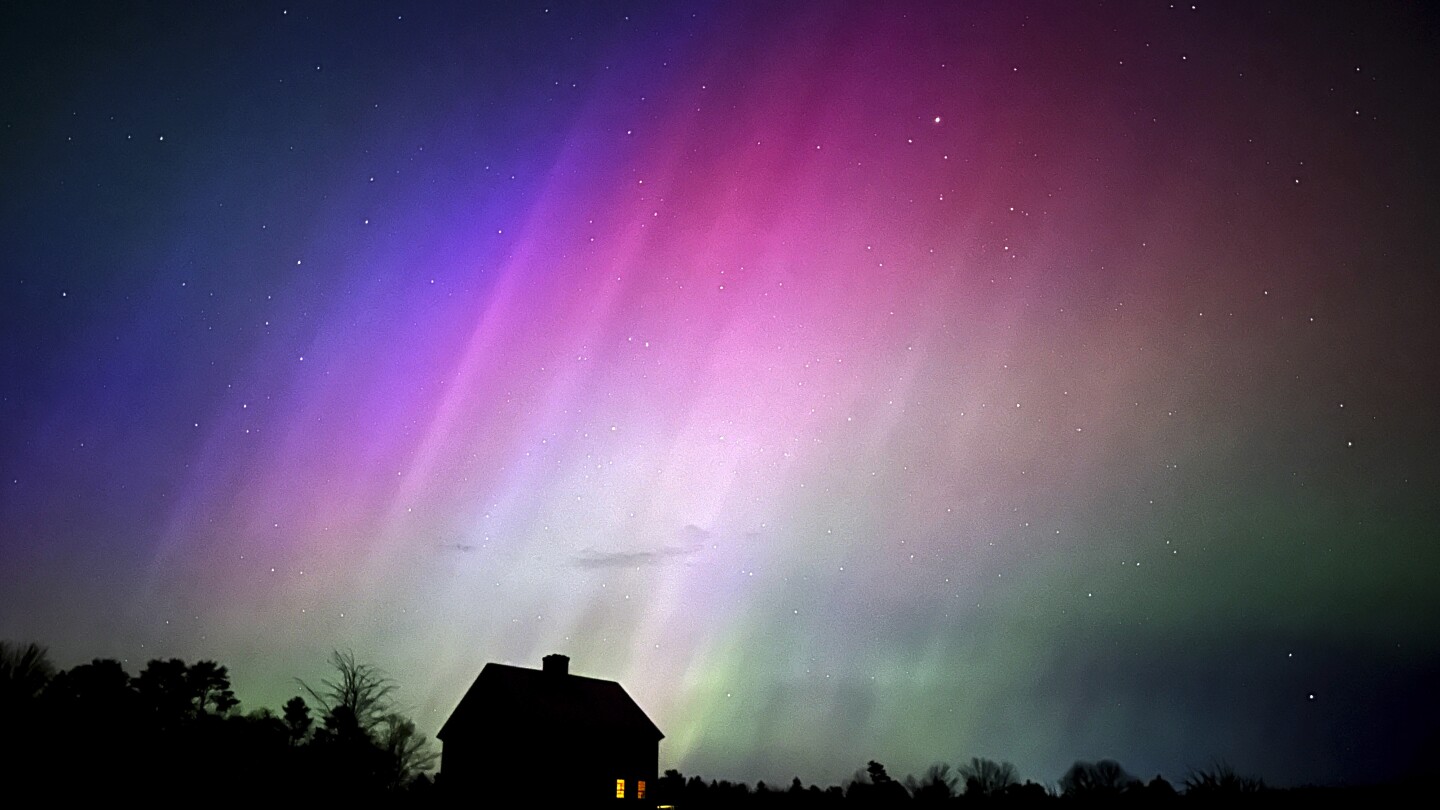Science
Northern lights could be visible in upper fringes of the US this New Year’s Eve

Solar Storms to Bring Northern Lights to Northern U.S. States for the New Year
Introduction: A Celestial Spectacle Awaits the United States
The start of the new year is set to bring a rare and breathtaking celestial spectacle to several northern U.S. states. Solar storms are expected to grace the skies with the mesmerizing beauty of the northern lights, or auroras, in regions that don’t typically experience this natural phenomenon. According to the U.S. National Oceanic and Atmospheric Administration (NOAA), two bursts of plasma have been ejected from the sun and are hurtling toward Earth. These solar storms are expected to arrive early this week, bringing with them the possibility of colorful auroras on Monday and Tuesday nights. Residents and visitors in states such as Alaska, Washington, Montana, North Dakota, South Dakota, Minnesota, Wisconsin, Michigan, New Hampshire, Vermont, Maine, and parts of Oregon, Idaho, Wyoming, Iowa, and New York may be treated to this dazzling display.
When and Where to Catch the Light Show
The best opportunity to witness this celestial event is expected during the early morning hours on Tuesday, while the skies are still dark. NOAA space weather forecaster Shawn Dahl emphasizes that clear skies are essential for optimal viewing. For those eager to catch a glimpse of the auroras, it’s advisable to venture away from the bright city lights, as darkness will enhance the visibility of this natural wonder. Additionally, smartphone cameras may capture hints of the aurora that aren’t immediately visible to the naked eye, making them a useful tool for documenting the experience. As the event draws closer, updated forecasts will be available on NOAA’s Space Weather Prediction Center website or through aurora forecasting apps, helping enthusiasts plan their viewing.
The Sun’s Active Phase: More Solar Surges and Auroras
The timing of this solar storm couldn’t be more opportune, as the sun is currently at the maximum phase of its 11-year solar cycle. This period of heightened solar activity means that solar surges and northern lights are becoming more frequent and widespread. Scientists predict that this active period will persist for at least another year, although they won’t be able to confirm when solar activity peaked until months after the fact. This prolonged phase of solar activity offers skygazers and scientists alike an extended opportunity to study and marvel at the auroras. For those in regions where the northern lights are a rare occurrence, this is a unique chance to witness a phenomenon typically reserved for the polar regions.
NOAA’s Role in Monitoring Solar Storms
While the solar storms bring excitement for stargazers, they also require careful monitoring by scientists. NOAA is keeping a close eye on this week’s solar activity to assess the potential for minor disruptions to high-frequency radio communications. These systems are crucial for airlines and amateur radio operators, among others. In recent months, NOAA has issued warnings for significant geomagnetic storms, including a rare severe geomagnetic storm warning in May. This storm was the strongest in over two decades, producing vivid light displays across the Northern Hemisphere. In October, another powerful solar storm surprised skygazers by bringing auroras to unexpected locations, including Germany, the United Kingdom, New England, and even New York City. These events highlight the importance of NOAA’s efforts to track and predict solar activity, ensuring that the public and critical systems are prepared for any potential impacts.
The Broader Implications of Solar Activity
The recent increase in solar storms and auroras is part of a larger trend as the sun approaches the peak of its solar cycle. This 11-year cycle is a natural part of the sun’s behavior, with periods of high and low activity influencing Earth’s magnetic field and atmosphere. While the northern lights are a beautiful byproduct of this activity, they also serve as a reminder of the dynamic and interconnected nature of our solar system. Scientists continue to study these events to better understand the sun’s behavior and its impact on Earth. By monitoring solar activity, researchers can improve their ability to predict and prepare for future geomagnetic storms, which could have more significant consequences for technology and communication systems.
Conclusion: A Rare Opportunity to Witness Nature’s Light Show
This week’s solar storms present a rare and thrilling opportunity for residents of northern U.S. states to witness the northern lights, a phenomenon that is typically limited to the polar regions. With clear skies and a bit of luck, skygazers could be treated to a dazzling display of colorful auroras. Whether you’re a seasoned stargazer or simply someone looking to experience a natural wonder, this event is not to be missed. As scientists continue to monitor and learn from these solar storms, the public is encouraged to take advantage of this chance to connect with the awe-inspiring beauty of the cosmos. So grab a coat, find a dark spot, and look up—this could be a New Year’s treat you’ll never forget!